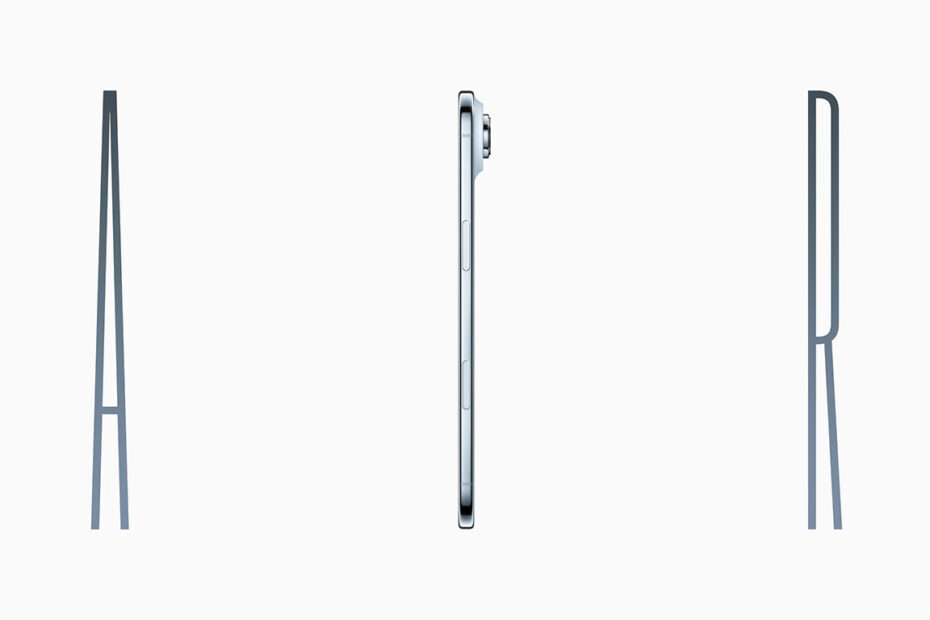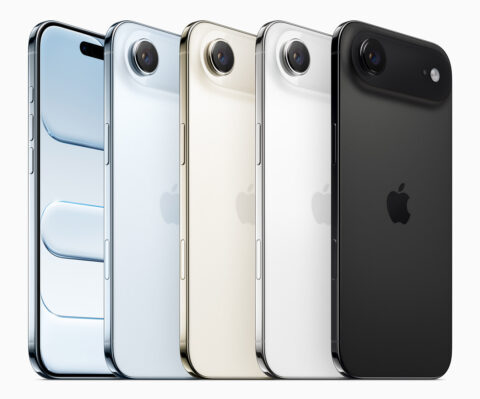The star of Apple’s September event this year was undoubtedly iPhone Air, a new entry to the lineup in a year where the other models had relatively straightforward updates. iPhone Air is the thinnest iPhone ever at 5.6mm, with a titanium build, a redesigned full-width camera system, and fewer compromises than you might expect from such a lightweight device. Think of it as the MacBook Air moment for iPhone: slimmer and lighter without giving up the features most people care about.
It’s a bold model that won’t be right for everyone – iPhone Pro is just $100 more, and the standard model is less compromised and cheaper – but for those who want a lightweight iPhone that still packs a punch, this might be exactly what the doctor ordered. Let’s take a closer look at just how much tech Apple has squeezed into this wafer-thin chassis.
A breakthrough design
The headliner is the design, clocking in at a ridiculous 5.6mm thickness. A grade-5 titanium frame with a high-gloss finish keeps things light yet strong, while Ceramic Shield 2 protects the front with 3x better scratch resistance and reduced glare. Ceramic Shield now covers the back, too – including that precision-milled, full-width camera plateau. That wider ridge spreads the camera housing across the back, which not only looks distinctive but avoids the lopsided wobble you get from single-corner bumps. Apple says the chassis exceeds its toughest bend tests, pre-empting comparisons to the iPhone 6 “bendgate” controversy back in the day.
A single camera that acts like four
Yes, there’s only one visible rear lens on that new camera plateau – but it’s no big compromise. The 48MP Fusion Main camera offers the equivalent of four lens types, with popular 28mm and 35mm framing options, an optical-quality 2x Telephoto, and a large quad-pixel sensor with sensor-shift OIS for low-light work. A new image pipeline enables next-gen portraits with Focus Control at a level Apple says rivals multi-camera systems, automatically capturing depth so you can turn standard shots into portraits later in Photos. Video hits 4K60 Dolby Vision, with Action mode, Spatial Audio capture, and post-capture Audio Mix to boost voices and tame background noise.
In other words, it aims to do almost everything the regular iPhone 17’s two-lens system can do – just with a cleaner look and thinner body.
A smarter front camera
Up front, you’ll find the same new 18MP Center Stage camera as the iPhone 17. It uses a square sensor to widen the field of view, stabilize 4K HDR video, and let you shoot portrait or landscape while holding the phone vertically. For group shots, it can automatically expand and rotate to fit everyone in, and Dual Capture records front and rear cameras at once. On calls, Center Stage keeps you framed as you move.
Battery and efficiency
Thin usually means compromise, but not here. Between Apple silicon’s efficiency, a space-saving internal architecture, a full-width camera bump – referred to as the “camera plateau” by Apple’s design team – and smarter power management, iPhone Air is rated for all-day battery life. Whether that proves true in the real world remains to be seen, but Apple promises that Adaptive Power Mode learns your usage and dials things back when it senses you might run low, helping you reach bedtime without babysitting the battery.
Speed and Intelligence
Under the hood, iPhone Air runs the same A19 Pro chip you’ll find in the Pro models, backed by the new N1 wireless chip and Apple’s C1X modem. That combo means snappy performance for Apple Intelligence features, AAA-style mobile games, and faster on-device photo processing. N1 unlocks Wi-Fi 7, Bluetooth 6, and Thread, while C1X boosts cellular speeds and efficiency compared to Apple’s first-gen modem.
A bigger, brighter, smoother display
The 6.5-inch Super Retina XDR display brings ProMotion up to 120Hz for silky scrolling, and drops to 1Hz for the Always-On display to conserve power. That mostly gives it parity with the standard iPhone 17 model, although this display is slightly bigger. Outdoor use should be excellent, with 3000-nit peak brightness and 2x better outdoor contrast making it the easiest iPhone screen to see in sunshine.
eSIM-only
There’s no physical SIM tray here – iPhone Air is eSIM-only. That saves precious internal space, improves security, and makes it easier to add or switch plans when traveling. With support from hundreds of carriers worldwide and a streamlined setup in iOS 26, this feels like the future of iPhone connectivity, assuming it’s supported where you live (it probably is).
Other features
Despite the thinness you still get the modern niceties: USB-C, MagSafe, the Action button for shortcuts, Camera Control for quick launches and on-device visual intelligence, IP68 water resistance, and Apple’s refreshed iOS 26 look with Liquid Glass.
Price and availability
iPhone Air starts at $999 with 256GB of storage, with 512GB and 1TB options for those who need more space. Finishes are space black, cloud white, light gold, and sky blue. Pre-orders open Friday, September 12, with availability from Friday, September 19.



